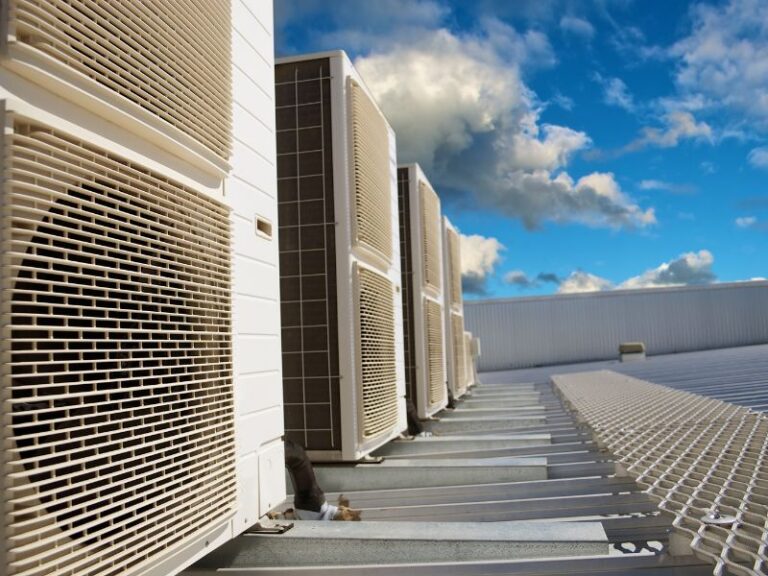When it comes to maintaining a comfortable environment in your home or office, choosing the right HVAC (Heating, Ventilation, and Air Conditioning) system is crucial. Whether you’re installing a new system or replacing an old one, the right HVAC system can ensure efficient climate control, energy savings, and long-term comfort. But with so many options on the market, how do you know which one is best for your needs? In this comprehensive guide, we’ll walk you through the steps for choosing the right HVAC system for your home or office.
Step 1: Understand Your Cooling and Heating Needs
Before choosing an HVAC system, it’s essential to understand your building’s cooling and heating requirements. The first step is to calculate the cooling load—the amount of cooling required to maintain a comfortable indoor temperature. Several factors influence your cooling load, including:
- Room size and layout: Larger rooms or multi-story buildings will require larger HVAC units.
- Insulation: Well-insulated spaces require less cooling or heating compared to poorly insulated ones.
- Climate: The external temperature in your area directly impacts how much energy your system will need to expend. Hotter and more humid climates typically require larger or more powerful systems.
- Occupants and activities: The more people you have in a room, the more cooling or heating is required. Additionally, activities like cooking, working, or using electronic devices add to internal heat gain.
For homes or offices, cooling load calculations are critical. By performing accurate load calculations, you ensure that the HVAC system is correctly sized for your space, preventing issues like under or over-sized systems.
Step 2: Choose the Right Type of HVAC System
There are various types of HVAC systems available, each suited to different needs. Understanding the various system types will help you make an informed decision about what will work best for your space.
1. Central HVAC Systems
Central HVAC systems are the most common in larger homes and offices. These systems typically consist of an air handler, a cooling unit, and ductwork that distribute cooled or heated air throughout the building.
- Best for: Larger homes or offices with existing ductwork.
- Benefits: Provides even temperature control across multiple rooms, relatively quiet, and efficient for large spaces.
2. Ductless Mini-Split Systems
A ductless mini-split system consists of an indoor air handler and an outdoor unit, making it ideal for homes or offices without existing ductwork.
- Best for: Smaller homes, additions, or offices with no existing ducts.
- Benefits: Flexible installation, energy-efficient, and allows zoning (individual room temperature control).
3. Window Units
Window air conditioning units are self-contained systems that cool only a single room. These are ideal for small homes or rooms that need additional cooling.
- Best for: Small rooms or apartments.
- Benefits: Affordable, easy to install, and perfect for cooling one room at a time.
4. Hybrid HVAC Systems
Hybrid systems combine a traditional furnace with a heat pump, which provides more flexibility in controlling heating and cooling.
- Best for: Homes or offices in areas with fluctuating temperatures.
- Benefits: Energy-efficient and cost-effective, as they use a heat pump for moderate heating and a furnace for extreme cold.
5. Packaged Systems
Packaged HVAC systems contain both the heating and cooling components in one unit, often installed on the roof or outside the building.
- Best for: Small commercial spaces or homes with limited indoor space for an HVAC unit.
- Benefits: Saves indoor space and is easy to install.
Step 3: Evaluate Energy Efficiency
One of the most important considerations when choosing an HVAC system is energy efficiency. Energy Star-certified systems are designed to use less energy while providing the same level of comfort, which can save you money on utility bills over time.
Key features to consider for energy efficiency:
- SEER Rating (Seasonal Energy Efficiency Ratio): This measures the cooling efficiency of your system. A higher SEER rating indicates a more efficient system.
- AFUE Rating (Annual Fuel Utilization Efficiency): This measures the efficiency of heating systems. A higher AFUE rating means the system uses fuel more efficiently.
- Variable-Speed Motors: These motors adjust the airflow based on cooling needs, reducing energy consumption compared to standard motors.
By selecting an energy-efficient HVAC system, you’ll not only save money on monthly energy bills but also reduce your home or office’s carbon footprint, contributing to a more sustainable environment.
Step 4: Consider the System Size
System size is another critical factor. If the HVAC system is too large or too small for your space, it will not operate efficiently.
- Over-sized systems result in short cycling—when the system turns on and off too frequently. This leads to energy wastage, higher bills, and increased wear and tear on the system.
- Under-sized systems have to run longer to reach the desired temperature, leading to poor performance and higher energy consumption.
To avoid sizing errors, always perform cooling load calculations using precise data for your space. Tools like CoolCalc can help simplify this process and ensure that you choose the right-sized system for your needs.
Step 5: Think About Maintenance and Longevity
Maintenance requirements and the system’s lifespan are also factors to consider when choosing an HVAC system. Some systems require more frequent servicing, while others are designed to be low-maintenance.
- Regular maintenance: Systems with advanced filtration and self-cleaning features may require less frequent maintenance.
- Longevity: Look for systems that offer warranties and long-lasting performance. Typically, the more energy-efficient and well-maintained the system, the longer it will last.
Step 6: Budget and Initial Cost
The initial cost of an HVAC system can vary depending on its type, size, energy efficiency, and installation requirements. While a higher upfront cost may seem daunting, consider the long-term savings in energy bills, maintenance, and repairs.
To maximize your investment:
- Consider financing options if available.
- Account for energy savings: Energy-efficient systems may have higher upfront costs but save you money over time.
Step 7: Work with an HVAC Professional
Choosing and installing the right HVAC system is not a DIY job. Working with a licensed HVAC professional ensures that the system is properly sized, installed, and configured to meet your building’s needs.
An HVAC professional will:
- Perform cooling load calculations.
- Recommend the best type of system for your space.
- Install the system correctly to ensure optimal performance.
How CoolCalc Can Help You Choose the Right HVAC System
CoolCalc simplifies the HVAC sizing process by providing accurate cooling load calculations tailored to your building’s size, insulation, and local climate. The app uses real-time weather data for all 36 Nigerian states to ensure that your HVAC system is accurately sized, taking into account local conditions that impact energy use.
With CoolCalc, you’ll avoid the pitfalls of over-sizing or under-sizing your HVAC system and ensure that you get the right system at the right cost. Whether you’re installing a new system or upgrading an existing one, CoolCalc makes the process easy, fast, and efficient.
Conclusion
Choosing the right HVAC system for your home or office is crucial for comfort, energy savings, and overall system performance. By considering factors like cooling load calculations, system type, energy efficiency, and maintenance needs, you can ensure you select a system that meets your needs without breaking the bank. Tools like CoolCalc can help you make this decision easier by providing accurate calculations and recommendations tailored to your specific space and climate conditions.
Ready to choose the perfect HVAC system for your space? Start with accurate cooling load calculations today by using CoolCalc—your go-to app for efficient and cost-effective HVAC design.




